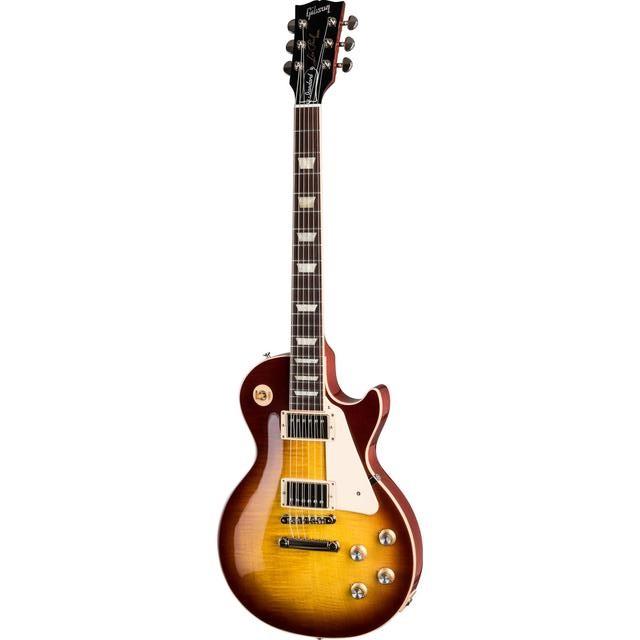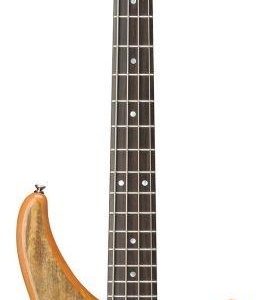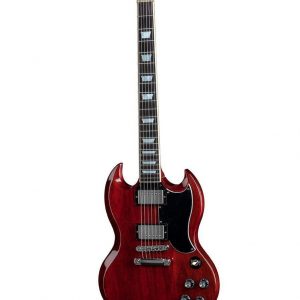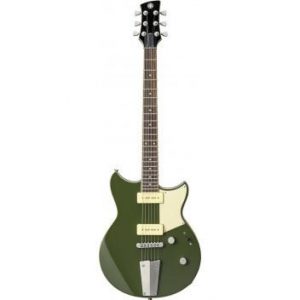Gibson Les Paul Standard ’60s
$1,652.99
With a classic look and timeless tone, the Gibson Les Paul Standard ’60s is the perfect guitar for those looking for a classic rock sound.
Compare
Description
Gibson Les Paul has been a favorite of guitarists worldwide since it was first introduced in the 1950s. Gibson’s Les Paul Standard ’60s electric guitar is a classic instrument that is based on the timeless design of the original Les Paul guitar. This guitar is specially crafted to capture the essence of the model that defined the sounds of rock ‘n’ roll music in the 1960s.
Features
The Gibson Les Paul Standard ’60s electric guitar comes with many features that musicians will appreciate. It has a mahogany body with a maple top that delivers a beautiful, resonant sound. The neck is also made of mahogany and has a slim taper profile that is easy to play. The guitar has a set of Burstbucker pickups that produce a warm and balanced tone. There are also four control knobs, including two for tone and two for volume, that allow users to fine-tune their sound.
Design
The design of the Gibson Les Paul Standard ’60s electric guitar draws inspiration from the golden era of rock ‘n’ roll. The guitar has a classic look that is instantly recognizable from its carved maple top and sunburst finish. The body has a AAA figured maple top, which complements the guitar’s dark mahogany back and neck. The guitar has a rosewood fingerboard with 22 medium jumbo frets that are easy to play.
Sound
The Gibson Les Paul Standard ’60s electric guitar has a rich, creamy sound that is ideal for a wide range of musical genres. The guitar’s two Burstbucker pickups combine to produce a warm and balanced tone that is perfect for blues, rock, and jazz. The guitar is also great for fast-paced, high-energy music as it has excellent sustain and a powerful sound that can cut through any mix.
Conclusion
The Gibson Les Paul Standard ’60s electric guitar is a timeless instrument that has stood the test of time. It is a high-quality guitar that captures the classic sound and look of the original Les Paul guitar. Whether you’re a seasoned professional or just starting, the Gibson Les Paul Standard ’60s electric guitar is a fantastic choice for anyone looking for a great sounding and looking guitar that has been trusted by musicians for decades.
Gibson Les Paul Standard ’60s properties
| Product name |
Gibson Les Paul Standard ’60s |
| Brand |
Gibson |
| Type |
Electric Guitar |
| Number of Strings |
6 pcs |
| Handedness |
Right-Handed |
| Number of Frets |
22 |
| Cutaway |
Single Cutaway |
| Wood Type (front) |
Maple |
| Wood Type (body sides) |
Mahogany |
| Wood Type (neck) |
Mahogany |
| Wood Type (fretboard) |
Rosewood |
| Built-In Tuner |
Yes |
| Colour |
Sunburst/Colourburst |
Frequently Asked Questions:
How does the humbucker pickup configuration on a Gibson Les Paul Standard '60s differ from that of a single-coil electric guitar?
The Gibson Les Paul Standard '60s features two humbucker pickups, while many single-coil electric guitars use one or more single-coil pickups. The main difference between these pickup configurations is the way they capture and amplify the vibrations of the guitar strings. Humbuckers are designed to minimize unwanted noise (commonly known as hum) that can interfere with the signal, while single-coils are more prone to producing this noise due to their design. This makes humbuckers a popular choice for players who prioritize clarity and consistency in their sound, particularly in genres where clean and powerful tones are critical, such as blues or classic rock. Single-coils, on the other hand, can produce a brighter and more articulate sound that is preferred by some players, particularly in genres like country or punk rock, where a more pronounced attack and sustain are desired.
How does the vintage-style wiring configuration in the Gibson Les Paul Standard '60s contribute to its iconic tone and playability?
The vintage-style wiring configuration in a Gibson Les Paul Standard '60s is an essential factor contributing to its iconic tone and playability. This configuration involves a traditional treble bleed capacitor that helps maintain the high-end clarity and brightness of the guitar's tone, even with the volume turned down. Additionally, it employs classic CTS potentiometers, which provide smooth and precise control over the pickup output levels, contributing to the guitar's rich and full-bodied sound. The wiring is also shielded by a high-quality fiberboard covering the electronic components, reducing noise interference and ensuring reliable performance. All these factors combined result in the classic Les Paul tone that has made this guitar an enduring favorite among musicians of all genres.
How does the mahogany body and maple neck of a Gibson Les Paul Standard '60s contribute to its distinct tonal characteristics?
The mahogany body of a Gibson Les Paul Standard '60s and the maple neck work together to create a unique tonal profile. Mahogany is a dense, heavy wood known for its warmth and richness in tone. It produces a full-bodied sound with plenty of low-end depth and midrange presence. The maple neck, on the other hand, adds brightness and clarity to the overall tone. This combination results in a balanced, complex sound that is both warm and clear. Additionally, the weight of the mahogany body contributes to the guitar's sustain, which is one of the most distinctive qualities of a Les Paul. Overall, the mahogany body and maple neck of a Gibson Les Paul Standard '60s contribute significantly to its distinct tonal characteristics, making it a popular choice among guitar players looking for a rich, resonant sound.
How does the rosewood fingerboard and mahogany body of a Gibson Les Paul Standard '60s contribute to its unique tone and playability?
The use of high-quality materials such as rosewood fingerboard and mahogany body in the construction of a Gibson Les Paul Standard '60s guitar significantly contributes to its distinct tone and playability. The rosewood fingerboard, known for its warm and rich tonality, adds depth and clarity to the notes played on the fretboard, providing a full-bodied sound that is both balanced and articulate. On the other hand, the mahogany body of the Les Paul Standard '60s guitar produces a deep, resonant tone with a rich midrange character. The dense wood structure also provides excellent sustain, allowing the notes to ring out for longer periods, resulting in a warm, rich tonality that is perfect for playing blues and rock music genres. Moreover, the combination of rosewood fingerboard and mahogany body results in exceptional playability due to the smoothness and comfort of the neck's fretboard, which makes it easy to navigate chords and solos with speed and accuracy. Overall, the use of these premium materials in Gibson Les Paul Standard '60s guitar construction contributes significantly to its unique tone and playability, making it an exceptional choice for musicians seeking a high-quality instrument that delivers exceptional sound quality and comfort.
Before you buy Gibson Les Paul Standard ’60s










Luke Estrada –
Are you kidding me? I just got back from the most exhausting business trip in Chemnitz, staying at that dump Ibis budget on Carl-Hamel-Straße 7A. I’m still fuming about it, but what really gets my blood boiling is this piece of gear I had to play with – a certain iconic electric guitar. Let me tell you, it’s the perfect instrument for a musician who wants to sound like they’re from another era, but in a bad way.
I’ve played some great guitars in my time, but this one was a joke. It’s like trying to tame a wild animal – impossible. The neck is so narrow, it feels like I’m playing with a toothpick. And don’t even get me started on the pickups, they’re about as loud as a whisper. I mean, what’s the point of having an electric guitar if you can barely hear yourself?
I compared it to some other popular models, and let’s just say it falls woefully short. The Fender Stratocaster is like a Ferrari, sleek and powerful, while this thing is more like a Vespa – slow and underwhelming. Even the most amateur of players could outplay me on this instrument.
And don’t even get me started on professional use. I mean, come on, if you’re going to play on stage in front of thousands of people, you need an instrument that can keep up with your skills. This thing would get lost in a crowd – literally and figuratively.
I swear, it’s like the manufacturers are trying to hold us back from greatness. Speaking of greatness, have you seen the news today? Those youth activists in New York City demanding climate action? That’s what I call greatness. We need more people who care about making a difference, not just playing some outdated instrument that’s only good for pretending to be something we’re not.
Anyway, if you value your sanity and don’t want to risk hearing damage from this monstrosity, stay far, far away. It’s not worth it.